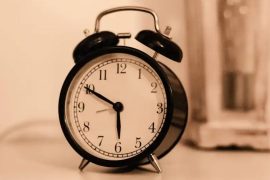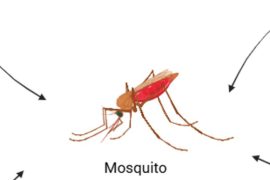A recent study has shed light on the optimal time of day for increasing the effectiveness of daily moderate to vigorous physical activity in combatting obesity. Despite previous conflicting findings in epidemiological research on the best timing for exercise in weight management, this study focused on the diurnal pattern of accelerometer-measured physical activity and its relationship with obesity.
The study, which examined data from the 2003–2004 and 2005–2006 cycles of the National Health and Nutrition Examination Survey conducted by the Centers for Disease Control and Prevention, involved 5,285 participants and aimed to understand whether the timing of physical activity throughout the day influences its association with obesity.
The diurnal pattern of objectively measured moderate to vigorous physical activity was categorized into three groups using K-means clustering analysis, a commonly used algorithm for identifying hidden patterns in data sets: morning, mid-day, and evening.
“Our study provided a novel tool to explore the diurnal pattern of physical activity and to investigate its impact on health outcomes,” stated Tongyu Ma, PhD, assistant professor, Health Sciences Department, Franklin Pierce University, Rindge, N.H.; and the Department of Rehabilitation Sciences, The Hong Kong Polytechnic University, Hong Kong, China. Ma is the corresponding author of the study.
The findings of the study indicated that the most robust association between moderate to vigorous physical activity and obesity occurred in the morning group. In contrast, a weaker, curvilinear connection was observed in the midday and evening groups.
Participants who met the recommended physical activity guidelines within the morning cluster exhibited a lower body mass index (BMI) and a smaller waist circumference compared to those in the other clusters. Dietary recall data also revealed that individuals in the morning cluster tended to have healthier diets and consumed fewer daily calories per unit of body weight. Interestingly, despite spending more time in sedentary behavior, the participants in the morning group maintained their lower BMI and waist circumference outcomes.
“Our findings propose that the diurnal pattern of moderate to vigorous physical activity could be another important dimension to describe the complexity of human movement,” Ma and his colleagues stated in the study.
Rebecca Krukowski, PhD, a clinical psychologist with expertise in behavioural weight management, commented, “This is exciting new research that is consistent with a common tip for meeting exercise goals—that is, schedule exercise in the morning before emails, phone calls or meetings that might distract you.”
Furthermore, participants in the morning cluster were typically older, with a 10-to-13-year age difference compared to the other groups. This group also had a higher proportion of female participants and a majority of non-Hispanic White individuals with a college or higher education level who had never used tobacco or alcohol.
In summary, this study suggests that engaging in moderate to vigorous physical activity between 7 a.m. and 9 a.m. may be the most effective timing for reducing obesity. The research highlights the importance of considering the diurnal pattern of physical activity and its impact on weight management. However, further investigation is needed to better understand the underlying mechanisms and to validate these findings in diverse populations.
However, Krukowski stated, since this is a cross-sectional study, “it is not known whether people who exercise consistently in the morning may be systematically different from those who exercise at other times, in ways that were not measured in this study. For example, people who exercise regularly in the morning could have more predictable schedules, such as being less likely to be shift workers or less likely to have caregiving responsibilities that impede morning exercise.
Predictable schedules could have other advantageous effects on the weight that were not measured in this study, such as with sleep length/quality and stress levels. In addition, the ‘morning larks’ who consistently rise early enough for morning exercise may be biologically different from their ‘night owl’ counterparts.”
Disclaimer:
The information contained in this article is for educational and informational purposes only and is not intended as a health advice. We would ask you to consult a qualified professional or medical expert to gain additional knowledge before you choose to consume any product or perform any exercise.






